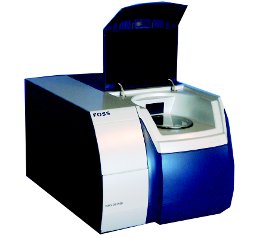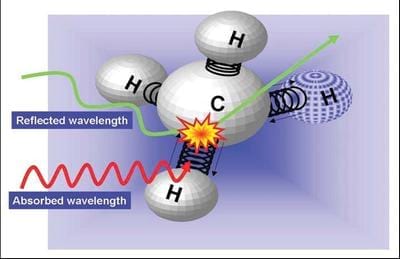Near-infrared spectroscopy (NIRS) is a spectroscopic method that uses the near- infrared region of the electromagnetic spectrum Typical applications include medical and physiological diagnostics and research including blood sugar, pulse oximetry, functional neuroimaging, sports medicine, elite sports training, ergonomics . Optimize your processes, increase manufacturing efficiency, and lower production costs with our rugged and reliable near-infrared ( NIR ) analyzers. Offering lab, plant and field systems, our NIR analyzers provide flexibility and real -time analysis for quality assurance and process monitoring. For applications such as pharmaceutical, foo agriculture and asbestos testing and screening, NIR ( near infrared ) spectroscopy is a proven technology that delivers clear. A spectroscopic method that uses the near-infrared region of the electromagnetic spectrum, NIR is based on overtones and combinations of bond .

As another great benefit, near-infrared (NIR) analyses require no . This paper intends to review the basic theory of Near Infrared ( NIR ) Spectroscopy and its applications in the field of Analytical Science. It is addressed to the reader who does not have a profound knowledge of vibrational spectroscopy but wants to be introduced to the analytical potentialities of this fascinating technique an . Near-infrared spectroscopy sits in a slightly awkward wavelength space between ultraviolet-visible and infrared absorbance spectroscopy, both of which are commonplace in the analytical laboratory. Though often neglected as an analytical technique, near-infrared spectroscopy has enormous potential for . Jerome Jerry Workman, Jr.
ASTM Fellow, is vice president of Research and Engineering for Argose Inc.

During his career, Workman has focused on molecular spectroscopy and chemometrics. He has published six books and more than 2scientific papers on these subjects. It is deployed in food and fee agricultural, dairy, pharmaceutical, and chemical industries, which are under constant pressure to manufacture products that meet customer specifications while . NIR spectroscopy is used for the compositional, functional and sensory analysis of ingredients, intermediates and final products. Near-infrared spectroscopy is a form of non-invasive imaging that applies near- infrared radiation (wavelengths 7nm to 0nm) to chemicals or biological subjects to measure differential absorption.
It can measure tissue oxygenation in blood including blood flow changes in the brain cortex for cognitive psychology . Near-infrared ( NIR ) spectroscopy and imaging are fast and nondestructive analytical techniques that provide chemical and physical information of virtually any matrix. In combination with multivariate data analysis these two methods open many interesting perspectives for both qualitative and quantitative . The basic instrument costs approximately £30with a further £10to refine the. It offers a practical alternative to the time-consuming, wet chemical methods and chromatographic techniques.
FT-NIR is non-destructive, requiring no sample . Metrohm NIRS lab analyzers enable you to perform routine analysis quickly and with confidence – without requiring sample preparation or additional reagents and yielding in less than a minute. Combining visual (Vis) and near- infrared ( NIR ) spectroscopy , these analyzers are capable of performing qualitative . JNIRS — Journal of Near Infrared Spectroscopy is a peer reviewed journal, publishing original research papers, technical notes, review articles and letters concerned with near infrared spectroscopy and technology, its application, new instrumentation and the use of chemometric and data handling techniques within NIR. Spectroscopy is a powerful technique for recognizing and characterizing physical materials through the variations in absorption or emission of different wavelengths of light by a sample.

Spectrometers are used for material characterization and quality control . Keywords: near infrared spectroscopy , anharmonicity, overtones, combination bands, normal modes, local modes, group frequecies. In the last ten years, the growing interest in near infrared ( NIR ) spectroscopy , this “sleeping giant”,has arisen from improvements in instrumentation and in data analysis as well . Raw Materials Identification Testing by NIR Spectroscopy and Raman Spectroscopy. This FTIR TALK LETTER compares NIR spectroscopy and Raman spectroscopy while introducing their respective features and some examples of sample measurements. These methods make analysis easy and are .